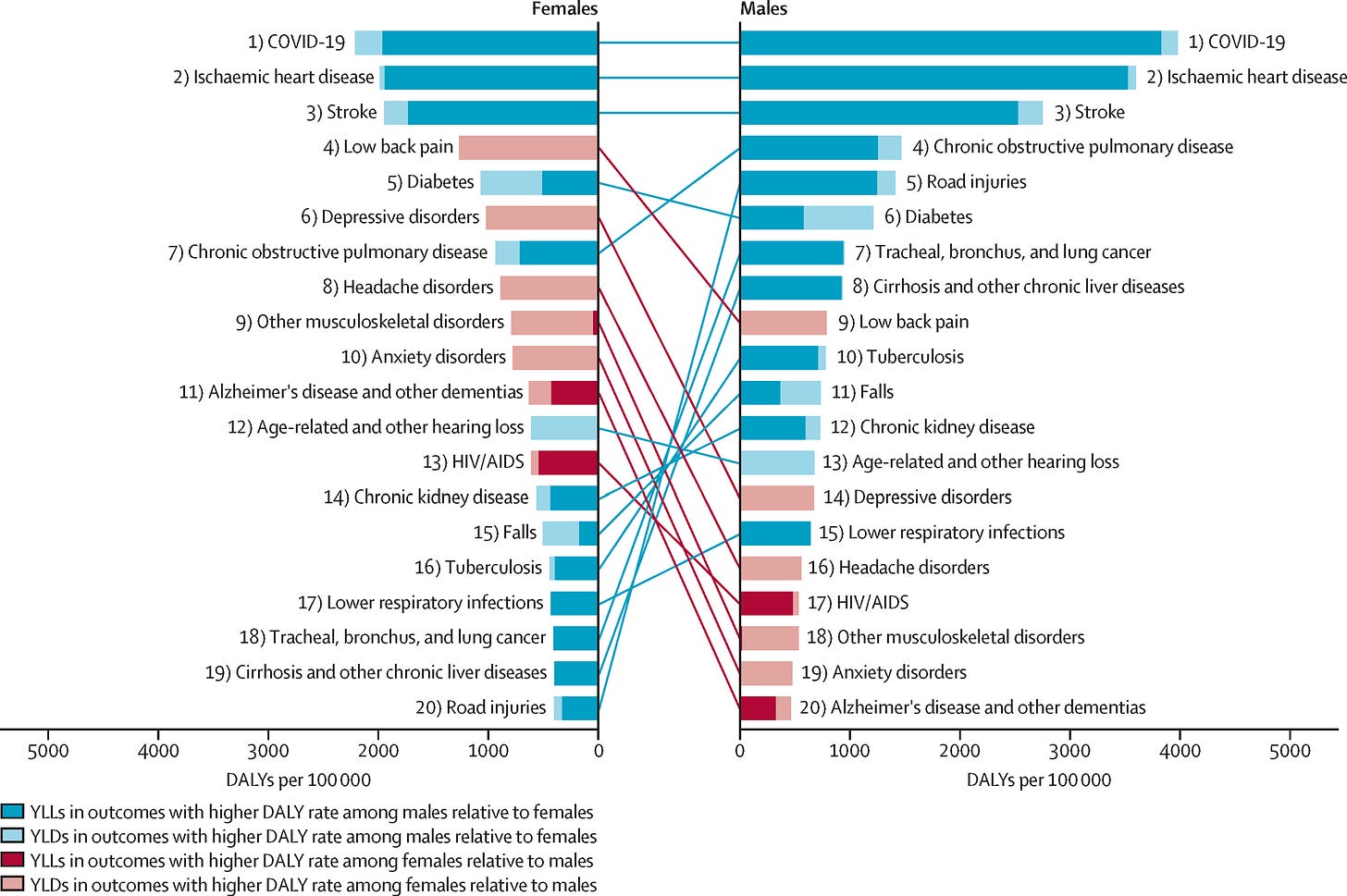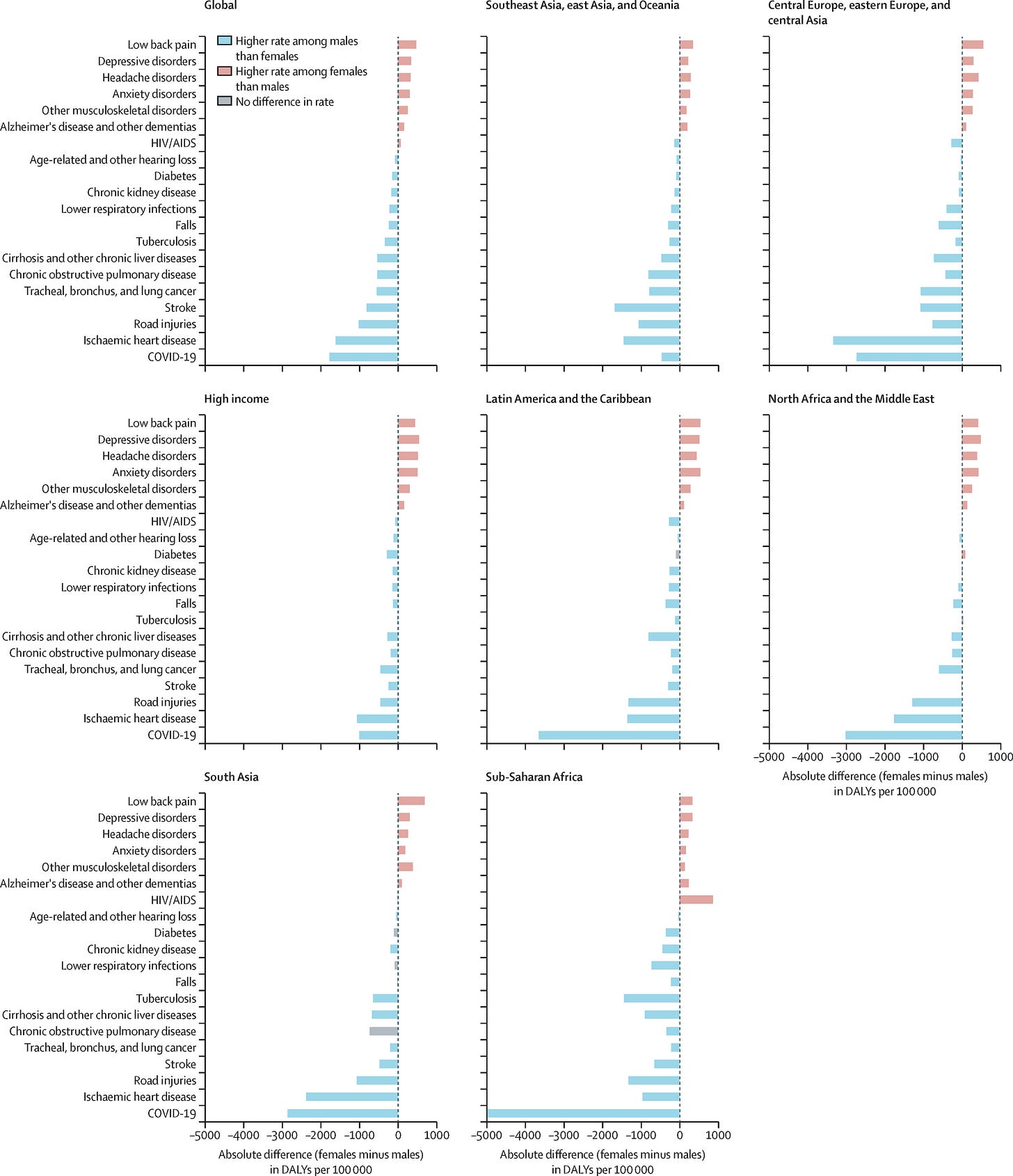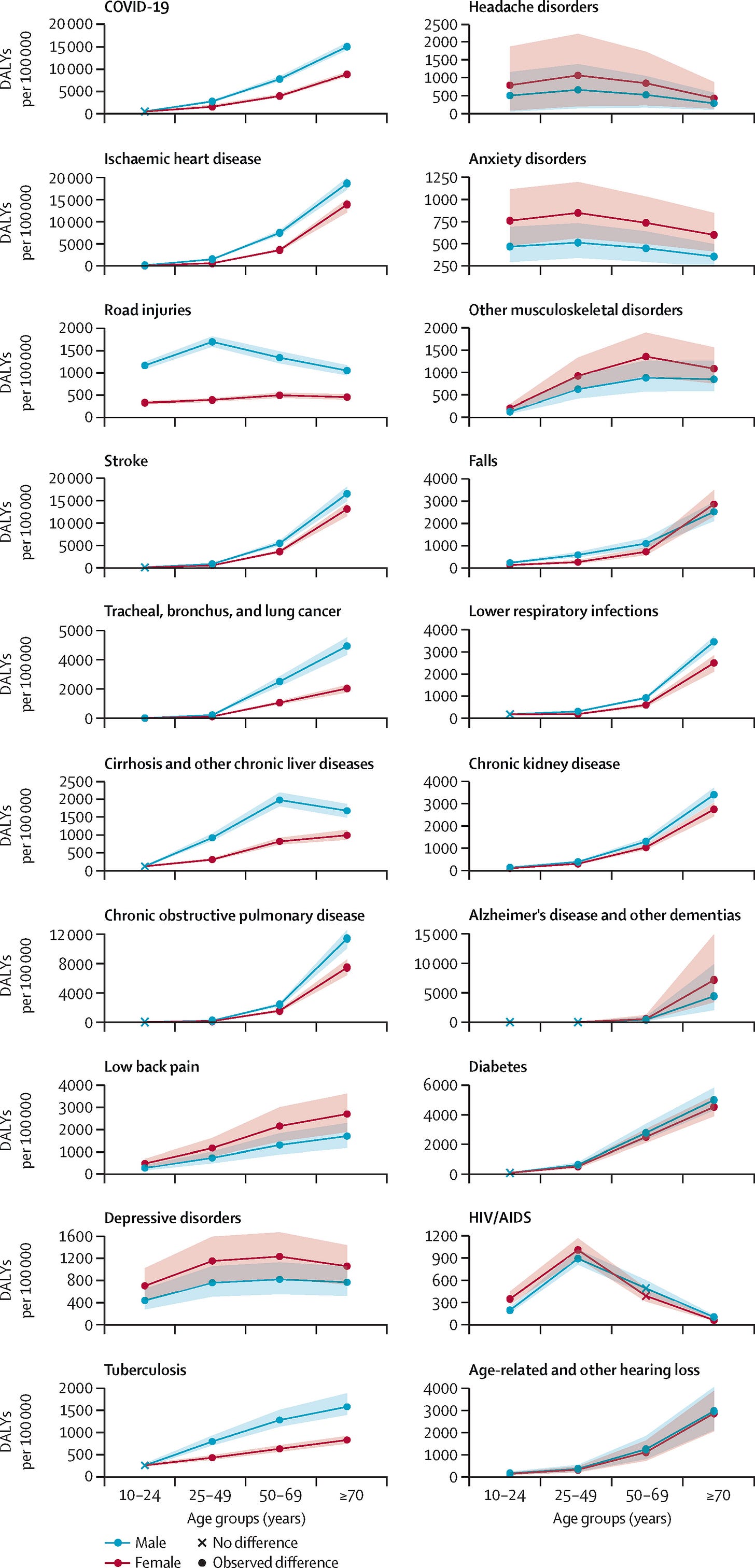Sex Differences in Disease Burden
Men lose more healthy years to premature death, women to ill-health and disability

This post is free to read for all. To support the Nature-Nurture-Nietzsche Newsletter, please consider a paid subscription. This will get you: (1) full access to all new posts and the complete archive, (2) full access to my “12 Things Everyone Should Know” posts, Linkfests, and other regular features, and (3) the ability to post comments and interact with the N3 Newsletter community. Thank you!
In this post, I’d like to share four graphs from a recent paper in The Lancet about sex differences in disease burden around the world. The paper, authored by Vedavati Patwardhan and colleagues, used data from the Global Burden of Disease Study 2021 to explore female-male differences in DALY rates. DALYs are disability-adjusted life-years, and represent the number of years of healthy life that are lost to disease through either (1) premature death or (2) ill-health and disability.
The first graph shows the disease burden for females vs. males for the Top 20 causes of disease burden. Red bars indicate that the burden is higher for females; blue bars indicate that it’s higher for males. Overall, males have a somewhat higher disease burden, with higher DALY rates for 13 of the Top 20 burden-causing diseases. Females have higher rates for the remaining seven. For diseases where males have a higher burden - including COVID-19, cardiovascular disease, and lung cancer - most of that burden is due to premature death. In contrast, for diseases where females have a higher burden - including lower back pain, depression, and anxiety - most of the burden is due to ill-health or disability.
The second graph shows sex differences in disease burden for females vs. males globally and for each of seven world regions. Again, red bars indicate a higher burden for females, whereas blue bars indicate a higher burden for males. The graph reveals striking cross-cultural commonalities in the distribution of burden by sex. For example, in every world region, females have a higher burden due to psychological difficulties such as depression and anxiety, whereas males have a higher burden due to cardiovascular disease and COVID-19.
The third graph shows sex differences in disease burden by age for the Top 20 causes of burden. Notice that conditions with a higher burden for females tend to appear earlier in life than those with a higher burden for males. Some sex differences in burden get larger with age; this is the case, for instance, for COVID-19, heart disease, and lung cancer. In contrast, other sex differences in burden peak in early-to-mid adulthood, and then decline with age; this is the case for road injuries, headaches, anxiety, and depression.
Finally, the fourth graph shows global trends in disease burden by sex from 1990 until today. The good news is that several major medical disorders, including pulmonary disease, heart disease, and stroke, trended downward throughout that period. In contrast, most psychological maladies flatlined or slightly increased. Diabetes increased as well.
Thanks for reading - and if you enjoyed the post, please feel free to spread the word and help support my efforts to promote politics-free psychology!
Related Reading From the Archive
Sex Differences in Mental-Health Problems in Childhood and Adolescence
I wasn’t planning to post again till the weekend, but I just came across this fascinating graph in a new paper in JAMA Psychiatry. It shows sex differences in the prevalence of a range of mental-health difficulties in people aged 5 to 24 years.
12 Things Everyone Should Know About Mental Illness
This is the third post in my “12 Things Everyone Should Know” series. You can find the full collection here. Clinical psychology is one of the central branches of psychology, and arguably the one that first sparks most people’s interest in the subject. Indeed, many laypeople think that psychology just







